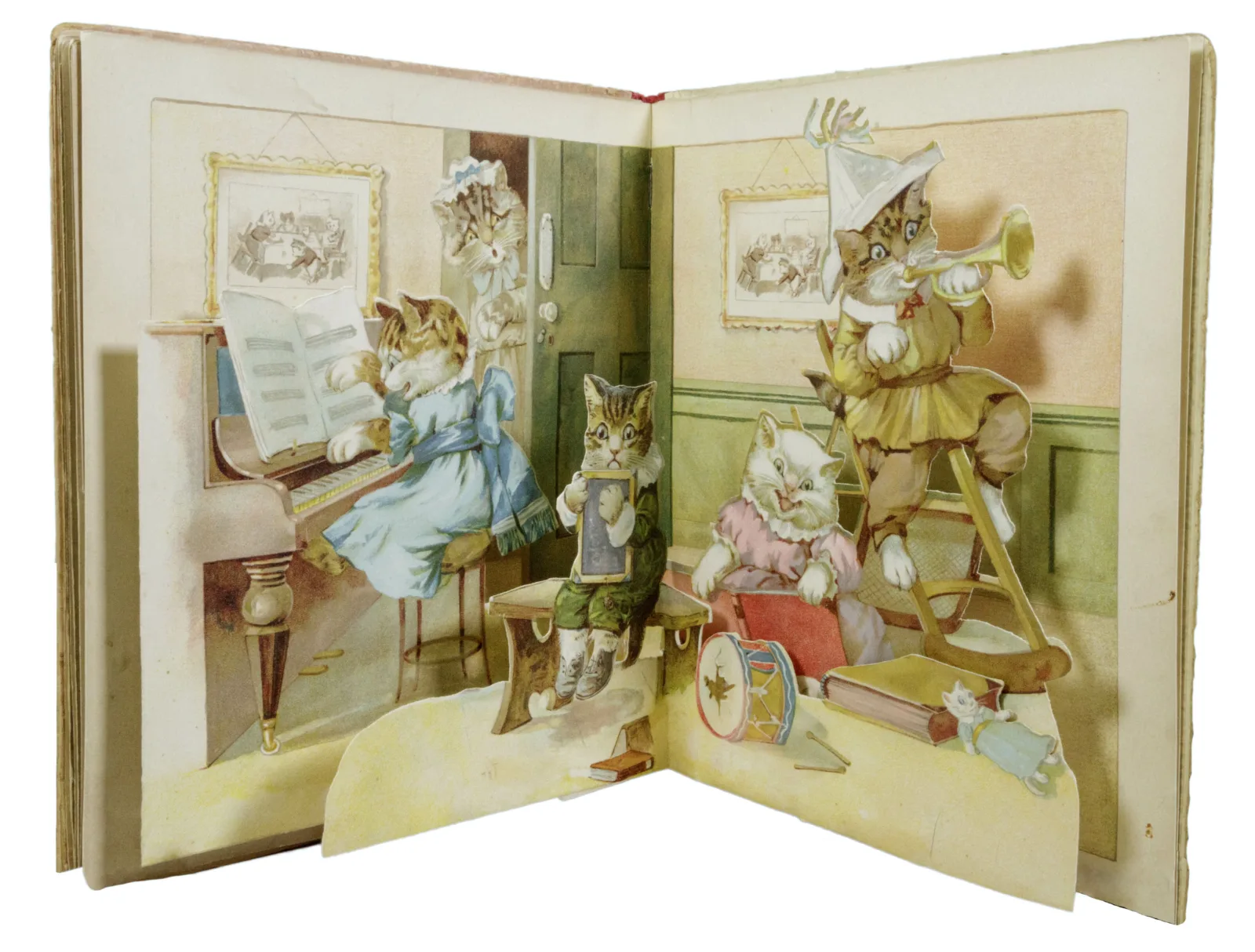Pop-Up Books through the Ages includes over 50 books, maps, and printed artworks for visitors of all ages. Don’t have time to see everything at once? Below, you’ll find five quick self-guided tours, from kid lit to Renaissance science to zoological sightings! There are also six facsimiles scattered through the galleries that you can interact with and enjoy comparing to the original books.
Kids’ Stuff Tour
Coming to see children's books? They only entered the picture in the late 18th century, but we do have a few kids’ books and toys on view. In the first gallery, there's our pop-up Pinocchio from 1932, and a toy-like pair of acrobatic monkeys on horseback in an oversized facsimile that you can rotate yourself.
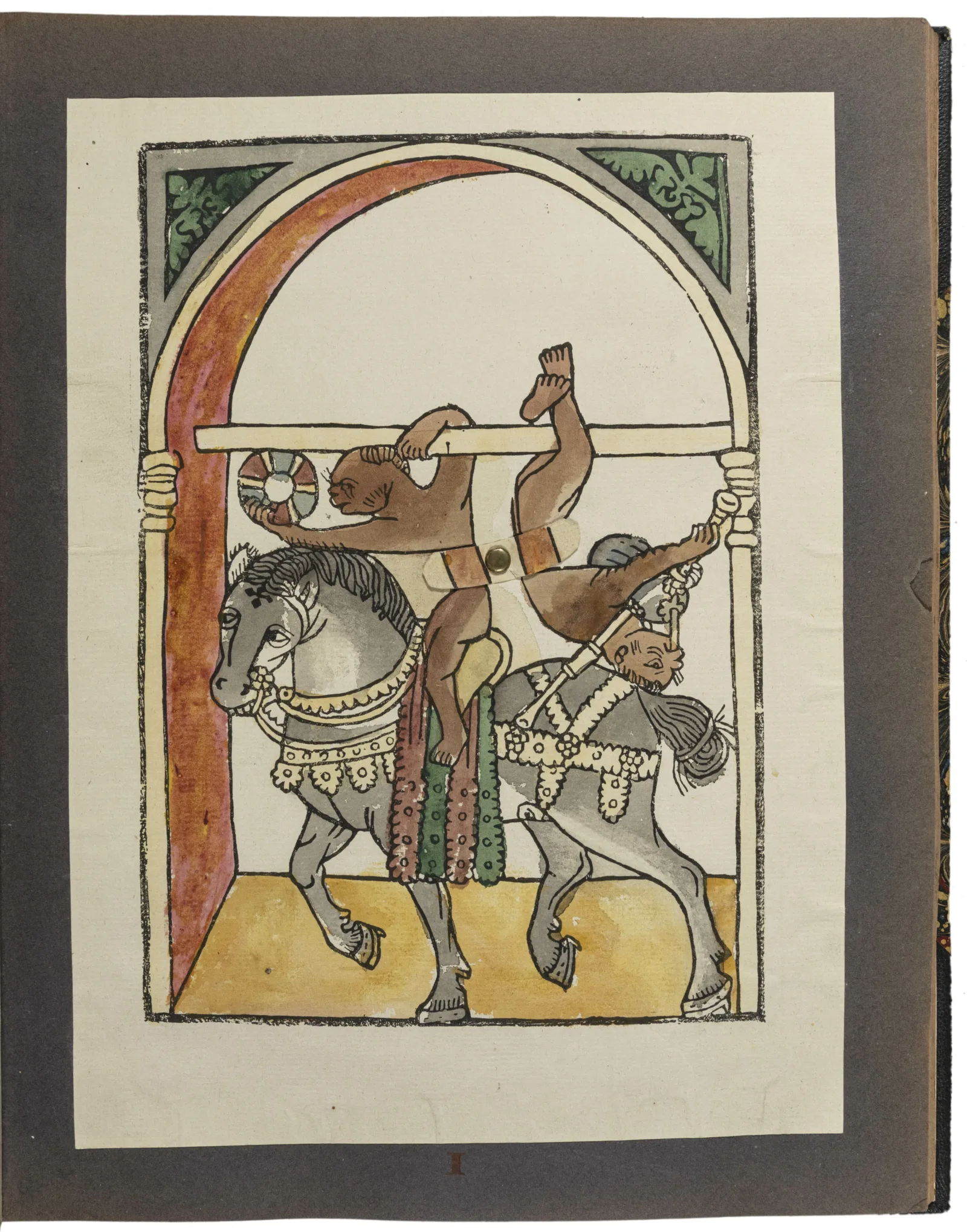
Like illusions? Near the second column of the main gallery, there’s a Metamorphosis book in which folding paper reveals fantastical creatures. To the south, there are naughty pop-up kittens! Lastly, on the west wall, our die-cut paper dolls are colorful, removable fun, and if you look closely, their die-cut lines are showing. These machine-perforations allowed their owners to punch them out and use them as real toys.

Literary Tour
Looking for a good read? In our first gallery, you'll learn that Jane Austen didn't precisely name-drop Humphry Repton in Mansfield Park, but her characters did consider trying out his architectural makeovers. Nearby you’ll find Pinocchio being swallowed by a whale in a 1932 edition of the classic tale.
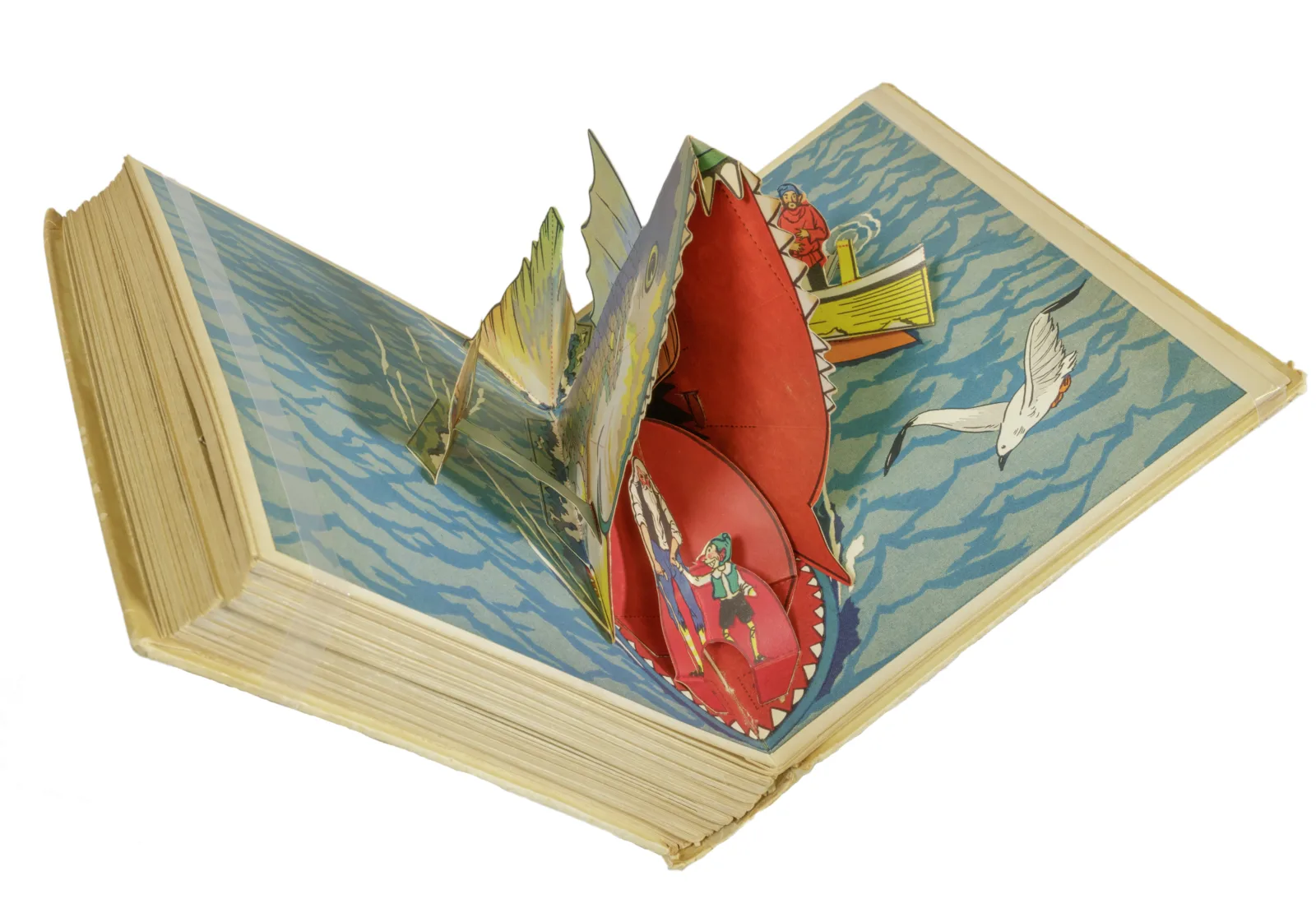
Moving back in time, and into the main gallery: We found our 15th-century bookmark volvelle in a religious text with a very tiny and red marginal hedgehog (east wall). You turn it to mark the column number that you were most recently reading.
This little dial on a string could have been used to mark your place in any book—even in our (unexpectedly interactive) Roman de la Rose manuscript, a medieval poem about courtly love and sensual flowers. Our 19th-century copy even has some handmade flaps added (central south).

Movable Mayhem Tour
Moving parts don't always stay put. Several of the books in our main gallery could have been assembled better. One of our Peter Apian dials (in the long eastern wall case) had the entirely wrong parts inserted! Another book was bound much too tightly for the folded-over volvelles to turn, despite the best efforts of its ambitious (and possibly pirate) author, Robert Dudley, to make them as impressive as possible.
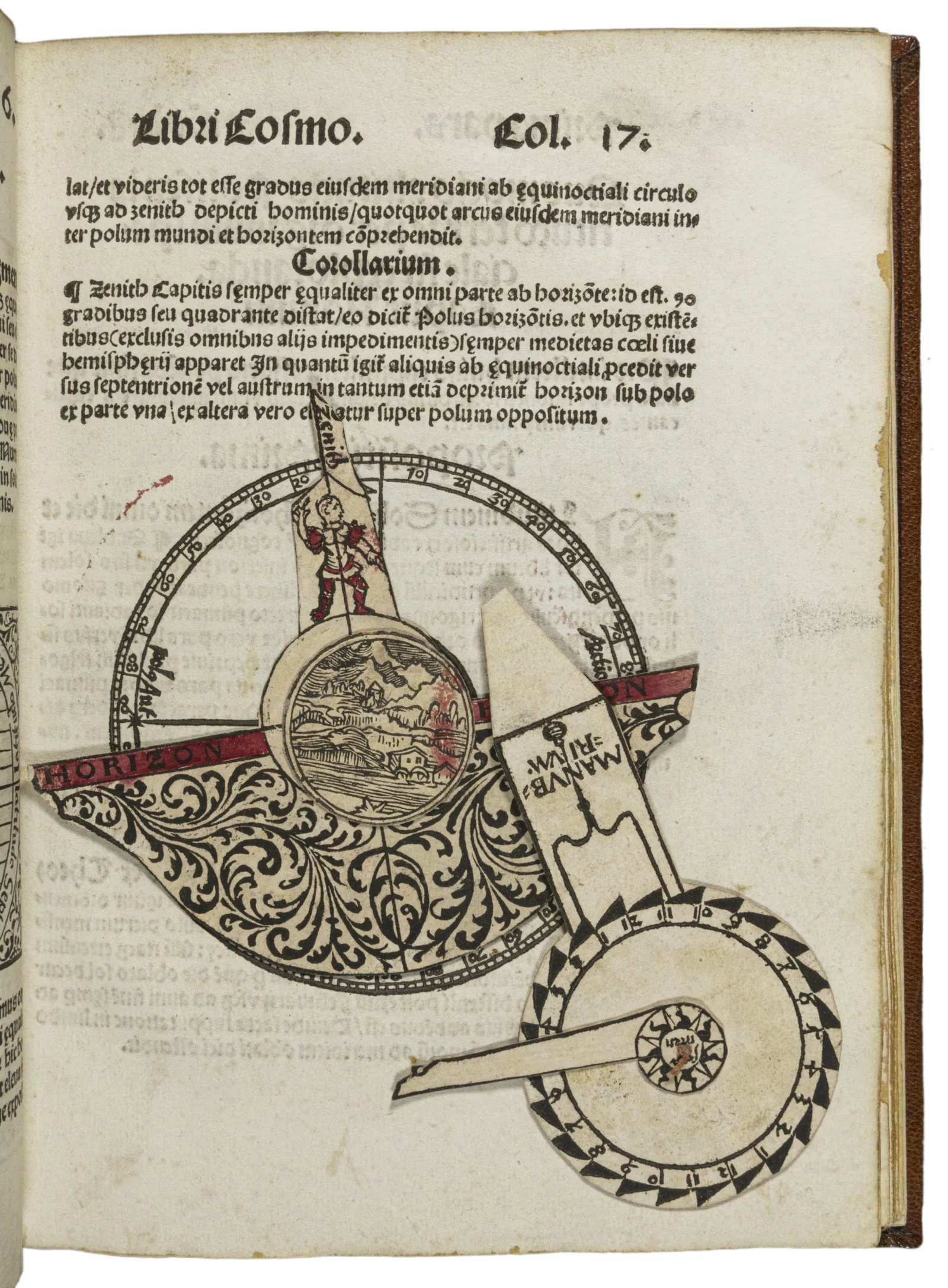
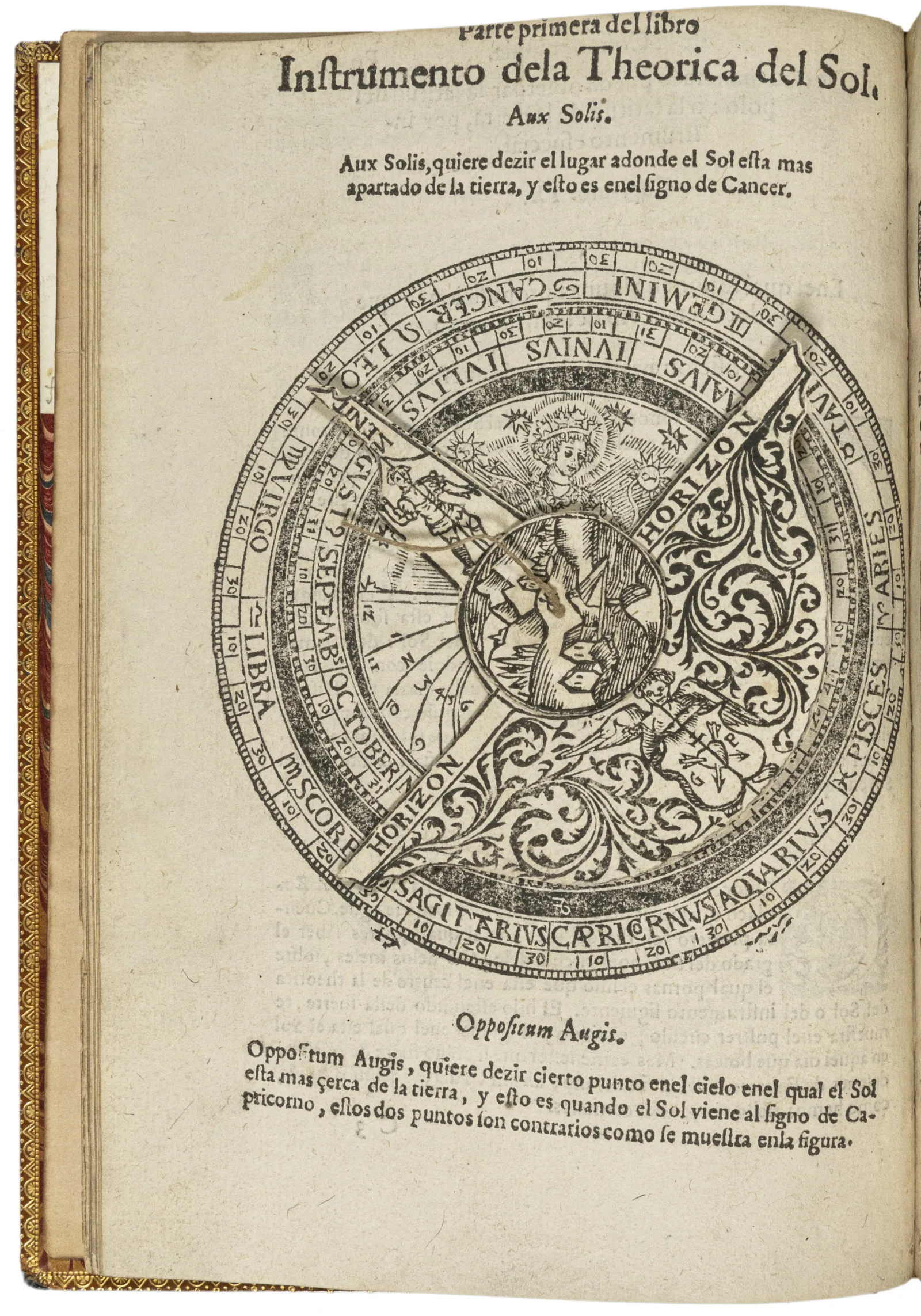
Others lost their parts over the years. Our 1618 broadside map of a disastrous rockslide in Plurs, near Switzerland, has shed its liftable mountain flap (northern map wall). Finally, in the center-south of the gallery, there’s a case of books with naughty pop-up kittens, and a range of others printed on fabric to deter damage. Did it work? Not so much!
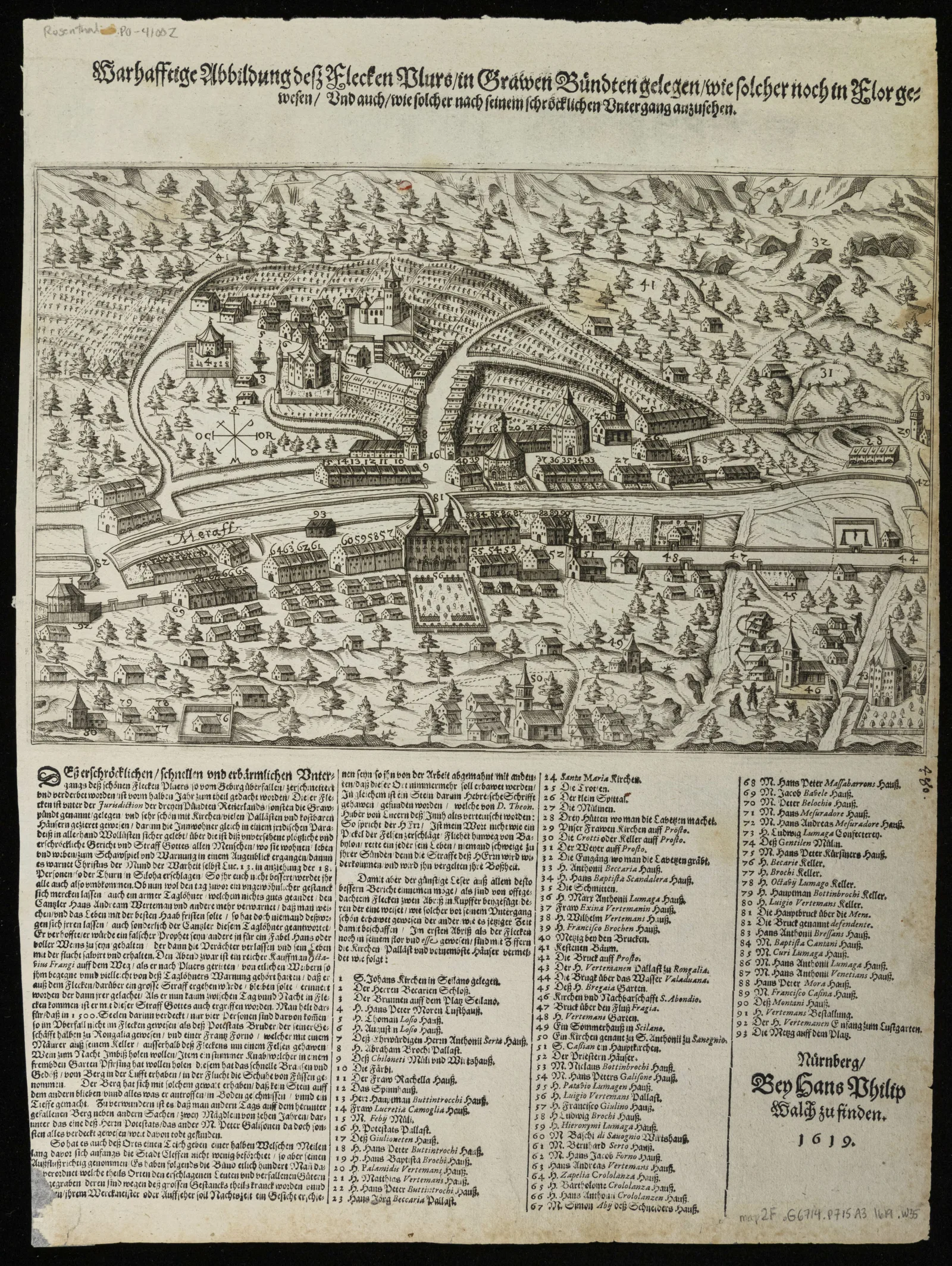
Renaissance Science Tour
16th-century printing was big, bold and experimented in multiple dimensions. The north-eastern corner of the main gallery boasts an entire wall full of pre-1800 maps and globes, and a long case of timekeeping volvelles. Can you find Renaissance rockstar Albrecht Dürer's world map and his perspectival flap book nearby? The five books by his contemporary, mathematician Peter Apian, show each movable dial from the book in turn. There’s also his illuminated tour-de-force of oversized astronomical volvelles in the first gallery.
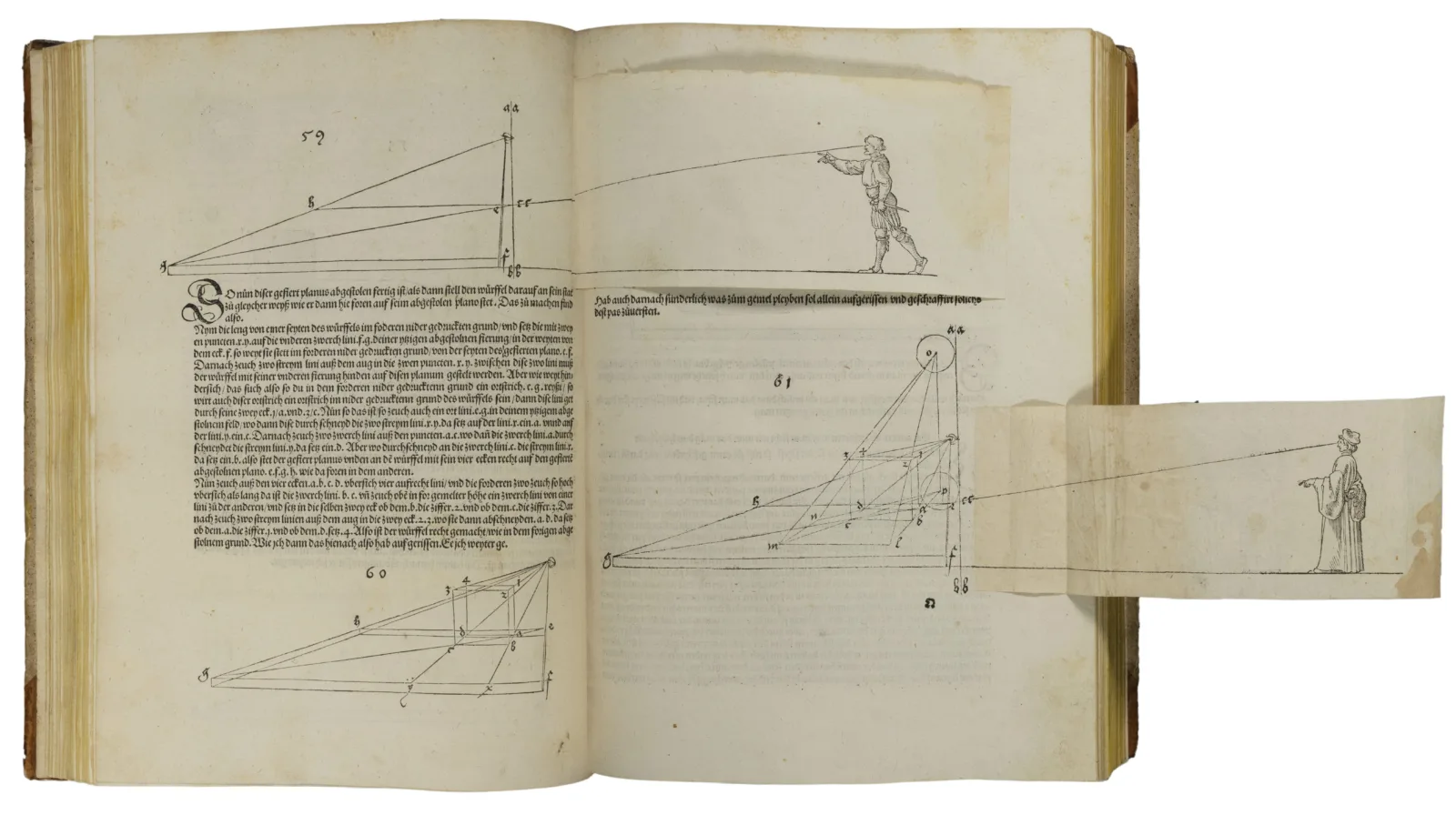
Want more flaps? Or party games? Why not both? Andreas Vesalius's famed anatomy text (in another case nearby) has a manikin and organs to cut out for a macabre game of “pin the tail on the donkey.”
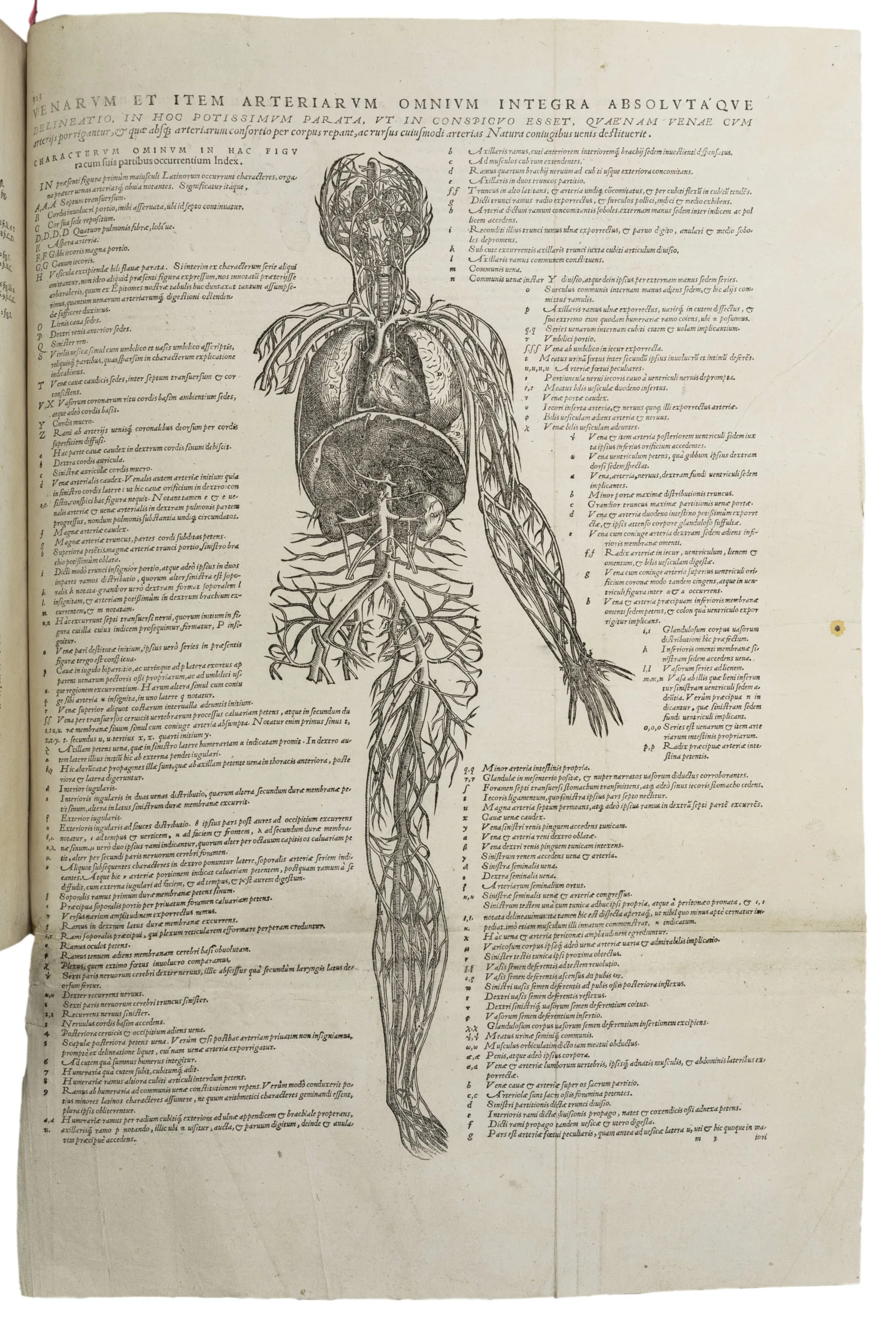
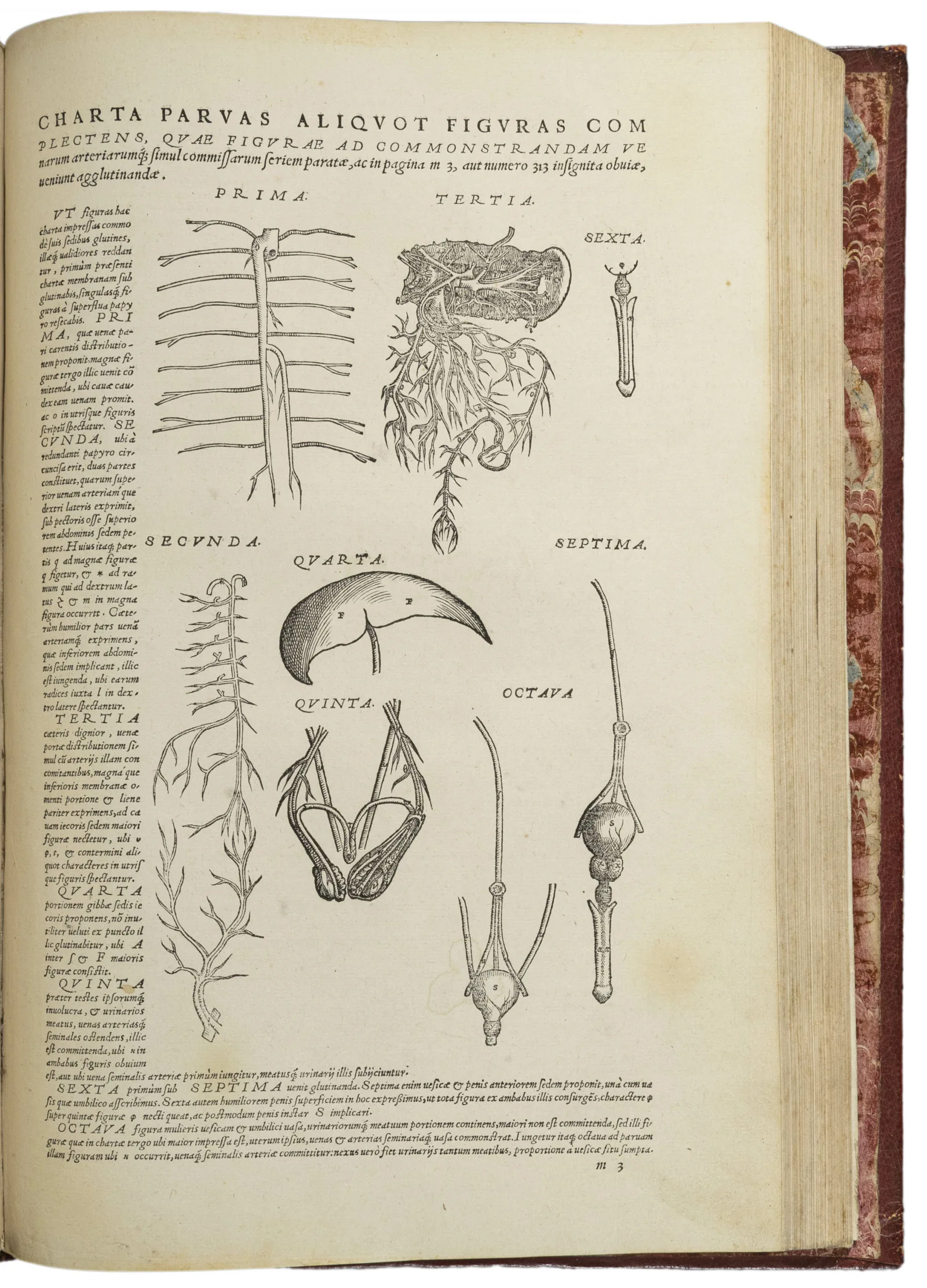
Zoological Tour
How many animals can you find in the exhibition? Do your dragons hoard books and calculate eclipses? Ours do! Check out the colorful Peter Apian astronomy book in the center of the first gallery, and Hannah Batsel's detailed drawing (and blown-up detail) on the exhibition's final wall.

Snakes on the brain? The first freestanding case in the main gallery boasts some of the earliest books in the show. One 15th-century dial has a tiny movable snake or worm that helps you memorize words, phrases, and concepts. Here there be monsters, unicorns, and puppies: the map wall on the North side of the main gallery includes several playful surprises among the engraved globe gores (which fold up to make spherical globes). And, finally, find those darn cats (to the south). We can’t leave our naughty pop-up kittens alone for long. They’re only pretending to learn their school lessons.
About the Author
Suzanne Karr Schmidt is the Newberry's Curator of Rare Books and Manuscripts and the curator of Pop-Up Books through the Ages.
